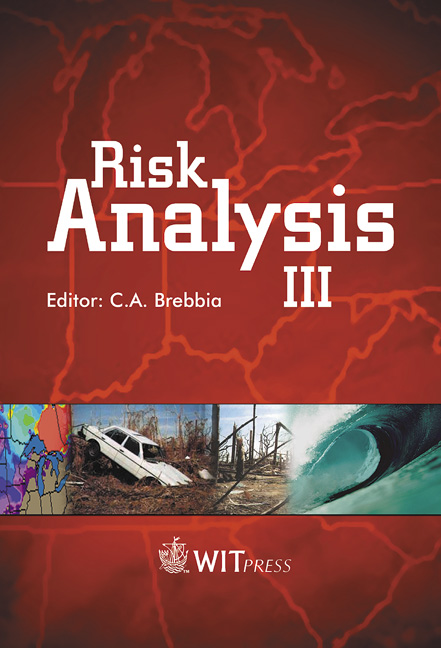Estimation Of Human Indoor Air Exposure From Soil Contamination With Benzene And Ethylbenzene Using Probabilistic Risk Assessment
Price
Free (open access)
Transaction
Volume
31
Pages
Published
2002
Size
651 kb
Paper DOI
10.2495/RISK020441
Copyright
WIT Press
Author(s)
J. Provoost, C. Cornelius & P. Seuntjens
Abstract
Estimation of human indoor air exposure from soil contamination with benzene and ethylbenzene using probabilistic risk assessment J. Provoost, C. Cornelis & P. Seuntjens Vito, Flemish Institute for Technological Research, Boeretang 200, B-2400 Mol, Belgium Abstract The Johnson & Ettinger model for vapour migration from soil to indoor air has been used for a site-specific human risk assessment. The site of interest was used for 30 years as an industrial plant for the production of paints and varnishes and is heavily contaminated with gasoline derivates, like benzene and ethylbenzene, and non-chlorinated solvents. To estimate the humane indoor air exposure, a site-specific probabilistic risk assessment was performed for the pathway vapour intrusion to indoor air. The endpoint is the concentration in indoor air, which was compared with the tolerable concentration in air (TCA) and indoor air measurements. For the indoor air pathway the effect of variations in soil, contaminant and building properties were evaluated. The parameter distributions of the relevant model parameters were used in a Monte Carlo simulation to rank the parameters in order of importance and to determine the contribution in variation of the individual parameters to the variation in the indoor air concentration. Soil vapour permeability, soil concentration, soil- building pressure differential and soil organic carbon represent 81 to 83% of the contribution to the variation in the indoor air concentration of benzene and ethylbenzene. The sensitivity analysis shows a wide range of possible indoor air concentrations for both contaminants. When comparing the measured concentrations with the calculated concentrations there is a reasonable correlation. The indoor air concentrations that had the highest probability for being calculated were measured in the indoor air. The general assumption that indoor air models are overestimating the exposure is not confirmed by this assessment.
Keywords





